第57章
Touching the generation of fish, the question may be raised, why it is that in the cartilaginous fish neither the females are seen discharging their eggs nor the males their milt, whereas in the non-viviparous fishes this is seen in both sexes.The reason is that the whole cartilaginous class do not produce much semen, and further the females have their uterus near hypozoma.For the males and females of the one class of fish differ from the males and females of the other class in like manner, for the cartilaginous are less productive of semen.But in the oviparous fish, as the females lay their eggs on account of their number, so do the males shed their milt on account of its abundance.For they have more milt than just what is required for copulation, as Nature prefers to expend the milt in helping to perfect the eggs, when the female has deposited them, rather than in forming them at first.For as has been said both further back and in our recent discussions, the eggs of birds are perfected internally but those of fish externally.The latter, indeed, resemble in a way those animals which produce a scolex, for the product discharged by them is still more imperfect than a fish's egg.It is the male that brings about the perfection of the egg both of birds and of fishes, only in the former internally, as they are perfected internally, and in the latter externally, because the egg is imperfect when deposited; but the result is the same in both cases.
In birds the wind-eggs become fertile, and those previously impregnated by one kind of cock change their nature to that of the later cock.And if the eggs be behindhand in growth, then, if the same cock treads the hen again after leaving off treading for a time, he causes them to increase quickly, not, however, at any period whatever of their development, but if the treading take place before the egg changes so far that the white begins to separate from the yolk.But in the eggs of fishes no such limit of time has been laid down, but the males shed their milt quickly upon them to preserve them.The reason is that these eggs are not two-coloured, and hence there is no such limit of time fixed with them as with those of birds.
This fact is what we should expect, for by the time that the white and yolk are separated off from one another, the birds egg already contains the principle that comes from the male parent....for the male contributes to this.
Wind-eggs, then, participate in generation so far as is possible for them.That they should be perfected into an animal is impossible, for an animal requires sense-perception; but the nutritive faculty of the soul is possessed by females as well as males, and indeed by all living things, as has been often said, wherefore the egg itself is perfect only as the embryo of a plant, but imperfect as that of an animal.If, then, there had been no male sex in the class of birds, the egg would have been produced as it is in some fishes, if indeed there is any kind of fish of such a nature as to generate without a male; but it has been said of them before that this has not yet been satisfactorily observed.But as it is both sexes exist in all birds, so that, considered as a plant, the egg is perfect, but in so far as it is not a plant it is not perfect, nor does anything else result from it; for neither has it come into being simply like a real plant nor from copulation like an animal.Eggs, however, produced from copulation but already separated into white and yolk take after the first cock; for they already contain both principles, which is why they do not change again after the second impregnation.